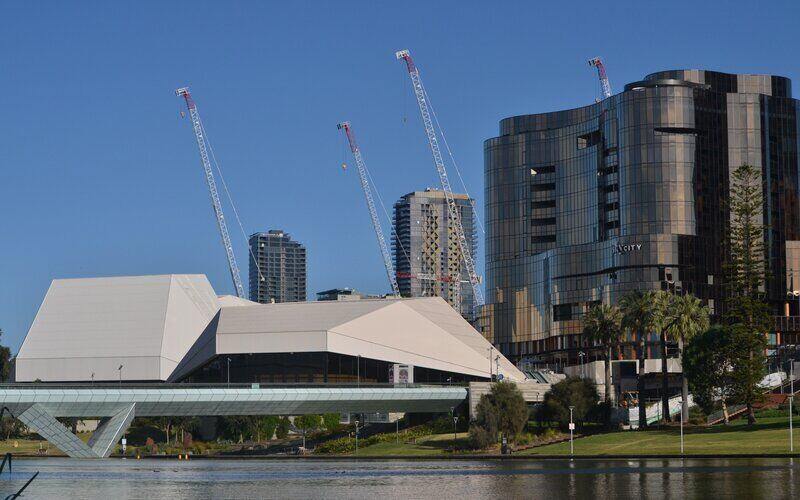The RBA lowered the official cash rate by 25 basis points from 1.50% to 1.25%, which is a new record low.
This change was not unexpected: markets had priced a June move at a 100% chance, while most economists were in agreement that it would happen in June.
RBA Governor Philip Lowe had all but signalled the RBA would cut rates this month in a speech he made in late May.
In his accompanying statement for this today’s rate cut, Mr Lowe said the RBA board made the change to support employment growth and provider greater confidence that inflation will be consistent with the medium-term target of 2-3%.
“The adjustment in established housing markets is continuing, after the earlier large run-up in prices in some cities,” Dr Lowe said.
“Conditions remain soft, although in some markets the rate of price decline has slowed and auction clearance rates have increased. Growth in housing credit has also stabilised recently.
“Credit conditions have been tightened and the demand for credit by investors has been subdued for some time. Mortgage rates remain low and there is strong competition for borrowers of high credit quality.”
A lower cash rate is expected to have significant implications on households and the economy as a whole, and Dr Lowe said today’s decision will “help make further inroads into the spare capacity in the economy”.
“It will assist with faster progress in reducing unemployment and achieve more assured progress towards the inflation target,” he said.
Mortgages under the microscope
Finance and economic experts all around the country have been driven into a frenzy thanks to today’s news.
CoreLogic head of Research Tim Lawless said there’s no doubt the focus will now turn to mortgage rates following the RBA’s announcement.
“Mortgage rates for owner occupiers are already around the lowest level since the 1960’s and lenders are generally expected to pass on most, if not all of the cash rate cut to mortgage interest rates,” Mr Lawless said.
“Lower mortgage rates, together with the likelihood of lower borrower serviceability assessments if APRA delivers on a relaxation to the base serviceability rate later this month, as well as renewed confidence following the federal election, are likely to see an improvement in housing market activity.”
However Mr Lawless also said borrowers are still facing much closer scrutiny in their applications, and that the stimulus of lower rates won’t be as effective if credit policies remain tight.
“Borrowers are facing much closer scrutiny on their income and expenses as lenders become less reliant on HEM (Household Expenditure Measure) benchmarks, and comprehensive credit reporting is providing lenders with greater transparency around borrower debt levels and credit standing,” he said.
“We aren’t expecting a rapid reversal in house price declines due to ongoing tight credit policies and, more broadly, economic uncertainty as global trade tensions escalate.”
“Exciting time for investors”
Simon Pressley, Head of Research at Propertyology, told Savings.com.au that now is “arguably the most exciting time for property investors in more than a decade”.
“Vacancy rates in large parts of Australia are tightening and there’s pressure on rents to rise,” he said.
Rental yields of 5% or better at a time when loan costs are now circa 3.5% are pretty tasty.”
“If this doesn’t entice more Australians to invest in their future I don’t know what will.”
Mr Pressley also said the RBA’s decision today appears to be more consistent with a strategy to “ignite Australia’s sound economic fundamentals”.
“Before events from the last few weeks, a cut to the RBA cash rate made no sense to me. I felt it would have been wasted while there was political instability, taxation experiments proposed by the Federal Opposition, and unreasonably tight credit supply,” he said.
“Hopefully today’s decision and other recent events become the trigger for long-awaited wage growth.”
ANZ quick out of the blocks…to not pass on the full cut
Treasurer Josh Frydenberg today told the big four banks they were expected to pass on the rate cut to their customers, and ANZ has been the first to do so.
However, it has not passed on the full 25 basis points as the Treasurer requested, instead cutting its variable home loan interest rates by 18 basis points.
“While we recognise some home loan customers will be disappointed, in making this decision we have needed to balance the increased cost in managing our business with our desire to provide customers with the most competitive lending and deposit rates possible,” said ANZ’s Mark Hand, group executive retail and commercial.
This rate cut now means ANZ’s standard variable, owner-occupier interest rate on principal and interest repayments would fall to 5.18%, while investors will pay 5.78%.
ANZ won’t be the only lender to pass on rate cuts.
While the rest of the big four are expected to move any minute now, the likes of RACQ, Athena and Reduce home loans have already moved in the hour since the RBA made its announcement.
Another rate cut is expected before the year is out, while the likes of Westpac expect another two, which would take the cash rate to just 0.75%.

Ready, Set, Buy!
Learn everything you need to know about buying property – from choosing the right property and home loan, to the purchasing process, tips to save money and more!
With bonus Q&A sheet and Crossword!



 Denise Raward
Denise Raward
 Brooke Cooper
Brooke Cooper


 Dominic Beattie
Dominic Beattie

